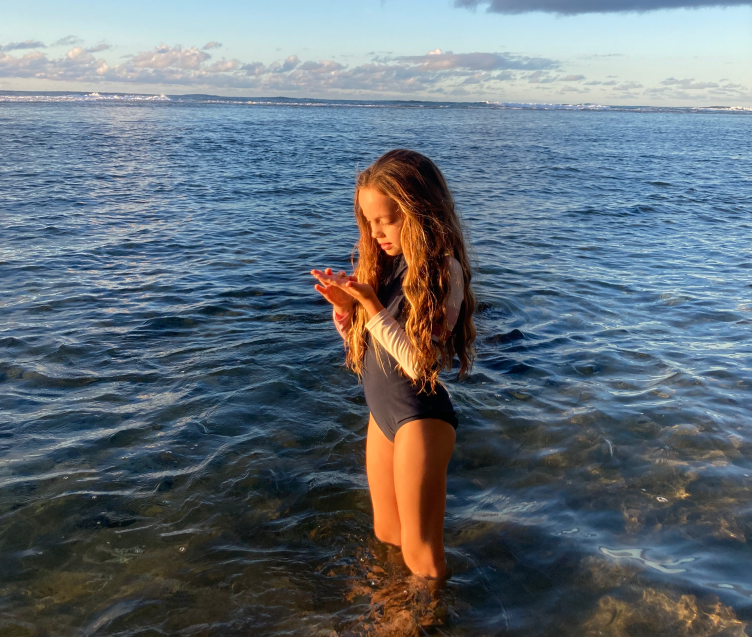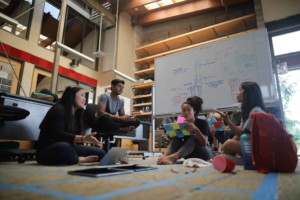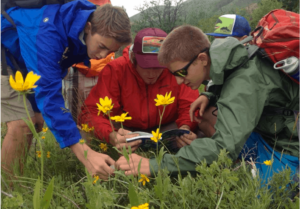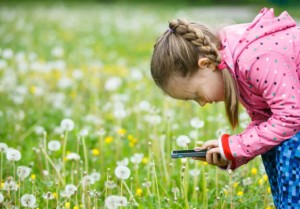Stop, Look, and Listen: Kilo
Key Points
-
My students and I are curious about the stories of the places we live, the stories of the people we too often ignore, even the stories of the tiny creatures that float around us as we walk in the water.
-
We learn these stories by being curious, by stopping to observe a place, and by listening to the voices of the indigenous experts all around us.

By: Jonathon Medeiros
“The most basic lesson that all art teaches us is to stop, look, and listen to life on this planet, including our own lives…” – Frederick Buechner
As the pandemic stretches into its third year, I wonder when we will stop thinking in terms of “when this is over.” I wonder at all the voices calling for a time when we can “get back to normal.” I marvel at the desire to use the same, tired measurement tools to quantify the ever evolving ways we fail our students.
Normal wasn’t working for very many people but normal is easily measurable.
In his writing about his philosophy of education, researcher Nicholas Burbules reminds us that teaching and learning are “inherently imperfect, uncertain, and incomplete.” We make a mistake when we insist on measuring learning despite its imperfections, when we pretend learning is ever complete.
When we pretend it is normal.
I am not often mistaken for normal, in my personal life or as a “teacher.” I don’t think I am responsible for passing on knowledge. How presumptuous of me, after all, to think my thoughts and views are the ones my students need to have. No, as a “teacher,” I really need to be learning about where I am, about myself, and about others.
Together, students and I explore the edges of our lives, where those edges push together. We learn to teach ourselves about our own skills and talents, our own communities, stories, and connections, through self reflection, through curiosity, conversation, and through writing. “Writing is thinking,” after all, as Dr. Edna Hussey says.
In particular, my students and I are curious about the stories of the places we live, the stories of the people we too often ignore, even the stories of the tiny creatures that float around us as we walk in the water. We learn these stories by being curious, by stopping to observe a place, and by listening to the voices of the indigenous experts all around us. And we write.
In Hawaiʻi, this kind of purposeful observation, this purposeful thinking about our observation, is called kilo and is key to helping students look past themselves and to look more closely at the places that they are in. But there is no space on a quarterly state assessment to show what we are learning through observing “life on this planet,” by practicing kilo.
We need spaces beyond normal where the imperfect, uncertain, and always incomplete work of learning can happen; we must find spaces where students can explore the edges of their lives. We can’t reduce learning to outcomes on standardized tests. We need to become comfortable with the gray areas and with the stuttering, wandering pace of learning and growth.
So, let’s not “get back to what school was,” but letʻs answer the probing question asked by the What School Could Be Podcast, which is simple: What could school be? School is not books and buildings. School is all of us, learning in a frustratingly slow, meandering, unmeasurable way. School could be people simply learning to be curious about their place, their community.
Last year, while most of my students joined the “classroom” from whatever remote location they call home, I decided to focus on observation, on kilo. As the virus continued to disrupt our ability to connect, I asked my students to slow down and find value in where we found ourselves.
We need spaces beyond normal where the imperfect, uncertain, and always incomplete work of learning can happen; we must find spaces where students can explore the edges of their lives.
Jonathon Medeiros
To do this, in part, we made use of Joy Harjo’s project Living Nations, Living Words as well as the Global Oneness Project. As we learned from what the resources taught us about place, we also focused our attention as close to our own lives as possible, examining our places here. Students’ ideas of place grew but more importantly, their understanding of themselves, of their own worlds, of connectedness, of the value of their own lives and places, became more and more obvious to each of them.
As I hear people continue to talk about getting “back to normal,” as I hear people complain about the “learning loss” our students have suffered (can you lose learning?), as I hear people pushing us all back to packed classrooms with fewer resources and more contagious letters of the Greek alphabet, all I can think about is “What if we didn’t rush back to normal?”
What if after all the time that this virus has forced us to slow down, “to stop, look, and listen to life on this planet,” we instead made some changes to our normal? I love to imagine a school that simply, deeply, and literally focuses on the stories of the place we all find ourselves. We can examine each layer of the literal place of our school, from prehistory, through the present, and into the speculative future world where water is simultaneously too high and too scarce. Dr. Hussey talks about “reading the world,” the texts that surround us. We can do this by being curious, by observing, by reading “the immediate spaces we are in,” and by practicing kilo.
We can start by reading the stories told in the geology of our place, and the mythology of our place, the indigenous and western science of our place, the current events and dramas of our place, and all the other stories we can find, in the way the leaves move when the wind blows this way instead of that or the way the water and shore looks as the tide rises on a full moon instead of an ʻole moon. As we stop, look, and listen, as we read our world, the different stories start to push and pull against each other and we do not just learn about our place but we also learn about our selves, each other, and the less visible stories beneath the veneer of the present.
And of course none of this fits on a state exam but it is learning, imperfect, uncertain, and incomplete, like all of us, really.
Jonathon Medeiros has been teaching and learning about Language Arts and rhetoric for 15 years with students on Kauaʻi, Hawai’i.







0 Comments
Leave a Comment
Your email address will not be published. All fields are required.